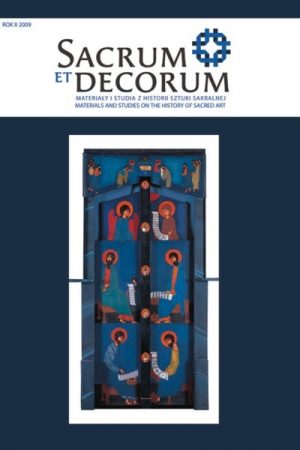Sense of artistic creation in the context of John Paul II’s Meditations on the Book of Genesis of The Roman Triptych
Keywords:
EMANATION, ICONOCLASM, INCARNATION, JOHN PAUL II, PRE-SACRAMENT, SISTINE CHAPEL, THE ROMAN TRIPTYCHAbstract
In his Meditations on the Book of Genesis of The Roman Triptych, John Paul II gave a condensed definition of artistic creation and demonstrated the critical role it plays as a component of Christian identity. His poignant call on all artists to bear the fruit of their vision, to 'create the image', is deeply grounded in the basic tenet of Christianity - the Incarnation of God. The idea of man as created in the image and the likeness of God is the key to understanding not just the Sistine frescoes of Michelangelo, but also Christian art at large. By showing visible reality, a piece of painting also reveals the reality of God. It transcends earthly determinants of time and space to express the eternal Word, and thus becomes a pre-sacrament - the invisible manifests itself in its visible form. John Paul II needs painting to be able to see God, or the trace of his presence in history and the reality of our here and now. A painting unveils before us the truth of being expressed in the emanation of the Creator into his creation. It allows us to deepen our awareness that we were created in 'the image and likeness' of God, that 'in him we live and move and have our being'. Fascinated with the Sistine vision of Michelangelo, John Paul II exclaims: 'The Beginning and the End, invisible, pierce us from these walls!'. A work of art allows us to contemplate not only historical events, objects and figures, but also that which is hidden beyond the 'threshold' - the invisible, the divine, the eternal. This is the paradox of painting as seen by the pope: 'all this abundant visibility, released by human genius' ultimately leads us towards the Invisible. By portraying earthly reality in sensory form, the artist unveils the mystery of God. A work of art reveals the Word, which was in the beginning and to which the world will return at the end of times.Downloads
Downloads
Published
How to Cite
Issue
Section
License
Copyright (c) 2009 Sacrum et Decorum

This work is licensed under a Creative Commons Attribution-NonCommercial-NoDerivatives 4.0 International License.
In line with the Open Access policy, authors retain full copyright to their articles – without restrictions.
Authors can deposit their articles in a repository of their choice.


